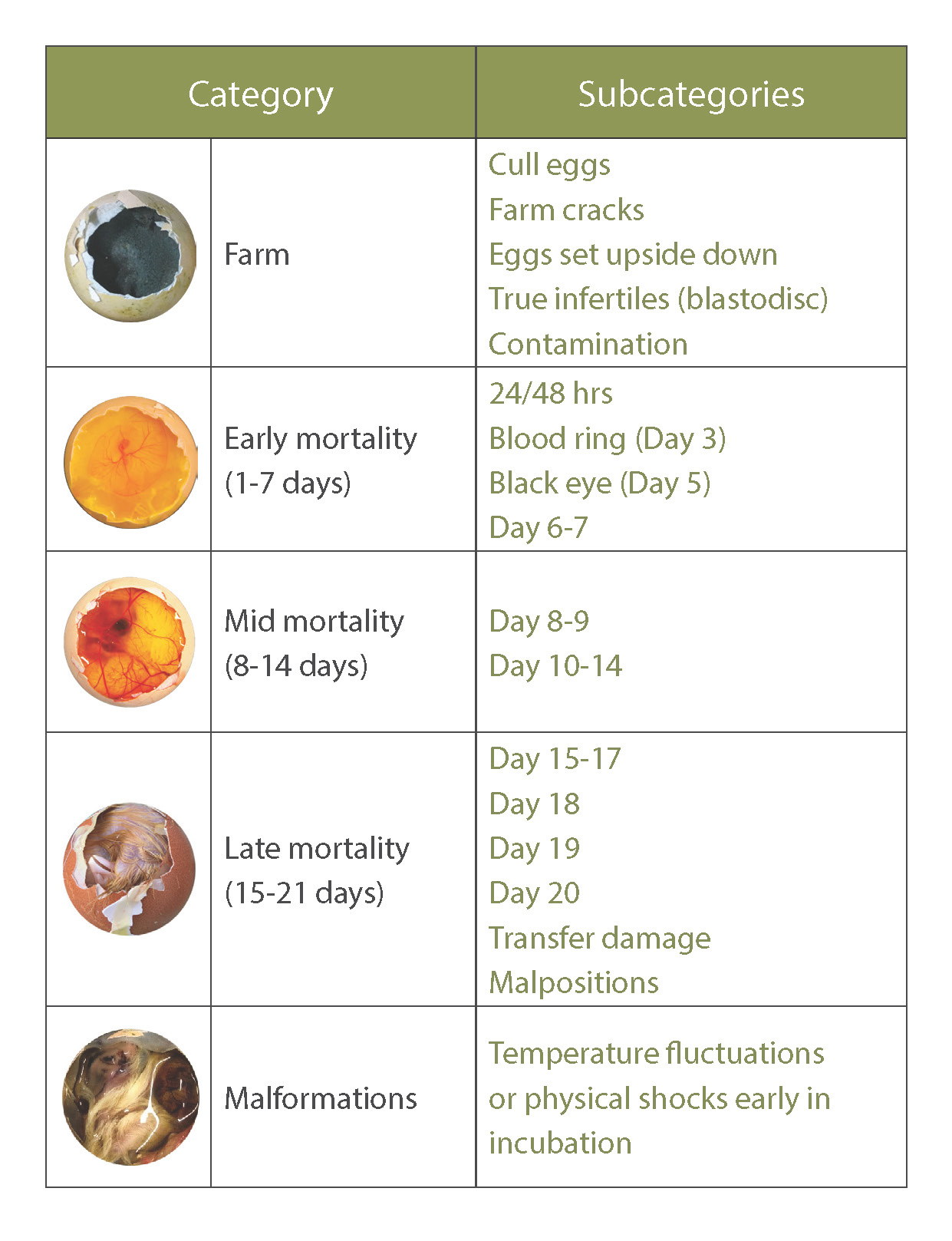To be effective in identifying the cause of hatch loss, conducting egg breakouts is a necessity. By examining clear and unhatched eggs and analysing embryo mortality patterns, you can relate existing problems to the breeder farm, egg holding, handling, transportation, transfer or setter or hatcher conditions in order to improve overall hatchability and chick quality.
Embryonic mortality: the moment … or the cause?
Day of mortality tells you when an embryo died, but it does not tell you which problem led to its death. The aim of a good breakout analysis is to help you identify the cause of embryonic mortality, rather than just the moment. Still, the first important step is always to calculate the time of embryonic mortality based on the physical development of the embryo. In doing so, it is crucial to understand that the rate of development of the embryo is directly proportioned to the incubation temperature.
The effect of temperature on embryo development and growth
On the first day of incubation, the embryo starts to develop. In an ideal scenario, all embryos develop and grow at the same rate. In reality, however, they develop at slightly different rates depending on the exact incubation temperature. The speed at which the embryo develops is directly controlled by the temperature it is incubated at.
When the eggshell temperature is 100°F (37.8°C), the embryo will develop at the ideal rate, resulting in the chick hatching at approximately 21 days (504 hours). However, if the temperature deviates from the ideal situation, this can dramatically change the embryo’s growth and development.
Incubation below 100°F will slow things down, causing the development to take longer than 504 hours. Incubation above 100°F up to 102°F (38.9°C) will accelerate development during the endothermic stage, but once the embryo is significantly exothermic, high temperatures will start to hinder the utilization of the yolk reserve, resulting in retarded development. An embryo incubated at a temperature exceeding 103°F (39.4°C) might die. It is also worth noting that an embryo dies gradually rather than instantaneously.
This explains why chronological age (or the exact number of hours you have been incubating for) is a bad metric to measure precisely when the ‘catalyst’ for mortality occurred. For this reason, embryo mortality patterns are best grouped into categories and not precise days.

Determining the cause of embryonic death
Hatchability is influenced by many factors. Some are the responsibility of the breeder farm, others of the hatchery. A properly performed breakout analysis on your clear and unhatched eggs is the best tool to pinpoint existing hatchability issues. It is advisable to use a troubleshooting list with embryo mortality patterns grouped into categories in order to identify the problem. Even better is when each category is split into subcategories, as this allows you to better isolate the exact cause of mortality.

Petersime is happy to help you in learning how to perform a proper breakout analysis and analyse embryo mortality patterns. A hands-on session on egg breakouts is included in the training programmes we offer. Please don’t hesitate to contact us for more information.



